Is a South-Facing Window Good for Plants?
Growing plants on south-facing windows can be challenging since many come from humid and shady tropical areas and are not accustomed to the direct bright sunlight, especially if the window is unprotected by a curtain or otherwise shaded.
Fortunately, a whole range of plants show their full decorative potential in such conditions and, located in indirect light, grow slowly or not at all. Here is our list of 14+ best plants for a south-facing window, divided into two groups:
a) plants for direct light on the window sill or up to three feet from the window
b) plants for bright indirect light at least four feet from the south-facing windows.
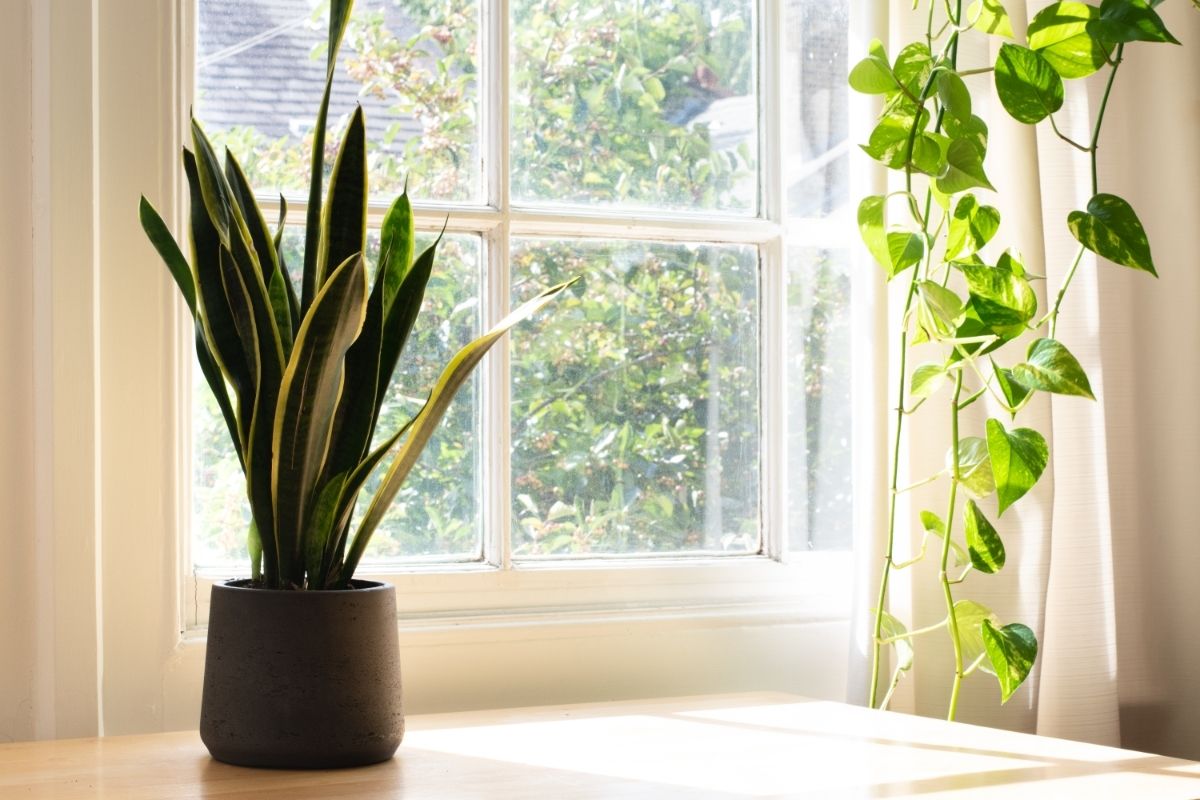
Best Plants for Bright Direct Sun – South Facing Window Sill
1. Aloe Vera Plants
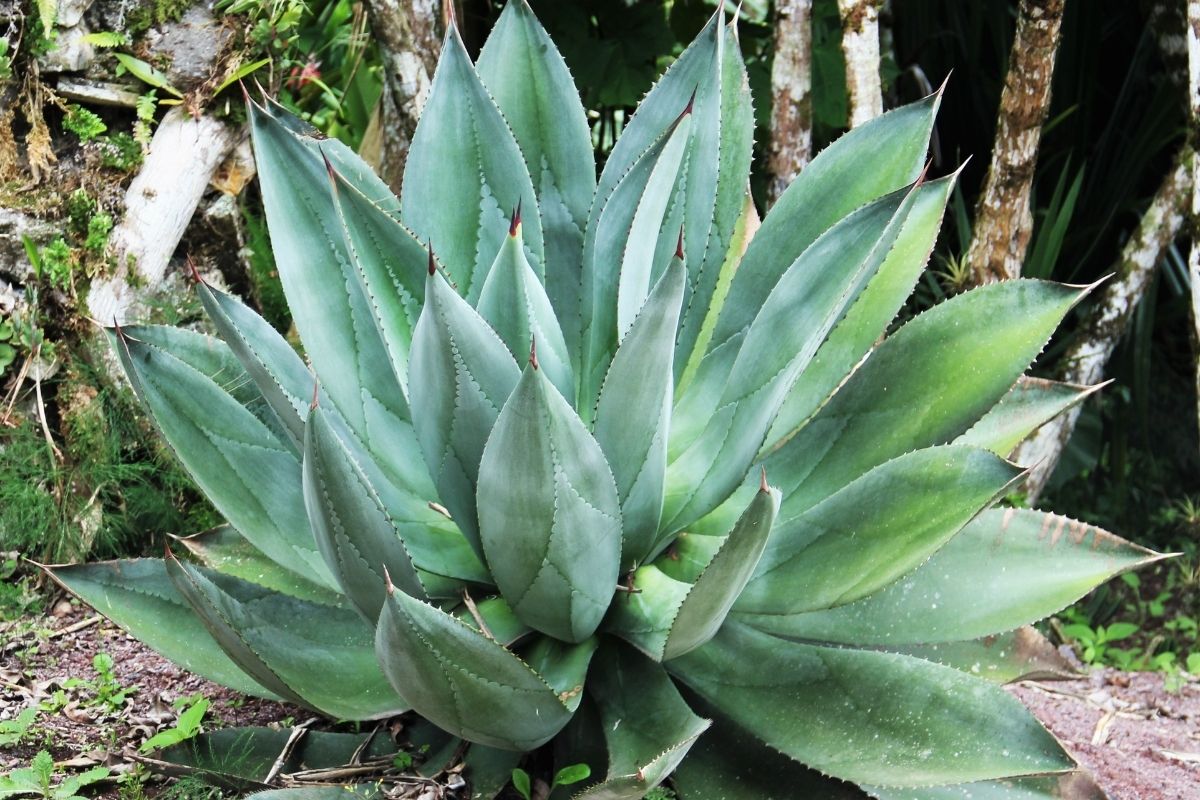
This ancient African succulent aloe vera plant, with proven medicinal properties, belongs to the same-named family.
Aloe vera can be a lovely potted plant that will feel great on the south-facing window sill with direct light in the northern hemisphere.
The Aloe plant has a shallow root (8 to 12 inches), so you should plant it in a broader and shallower pot. Stack a layer of stones on the bottom of the Aloe vera growing pot, then a layer of sand, and add the soil.
Containers must be a quarter filled with drainage material and compost since such a planting system is closest to its natural environment.
Since the thickened, edged leaves contain as much as 95% water, the temperature must never fall below 41 F due to the risk of freezing.
Aloe vera plants do not tolerate much moisture, so you should not water them more than once a week. However, when all plant metabolic processes slow down during the winter months, you should minimize watering to once a month.
2. Jade Plant (Crassula Ovata)
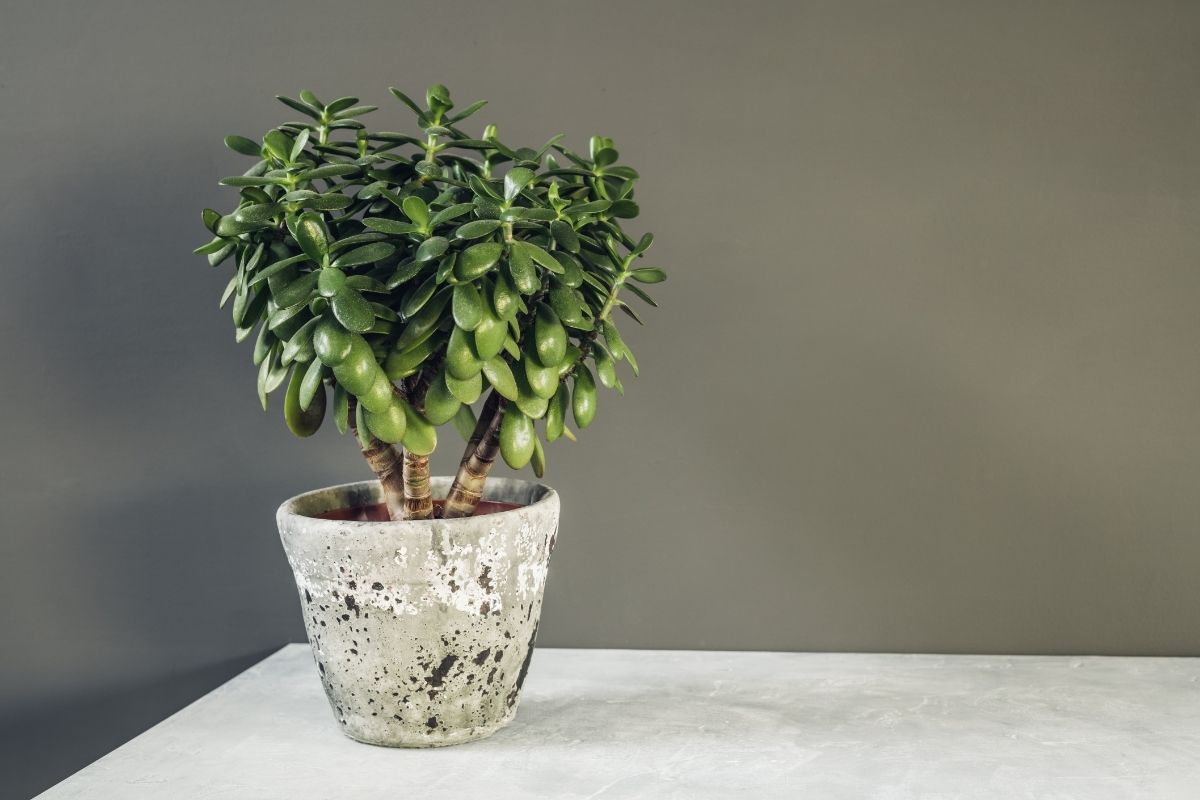
The Jade plant, Crassula ovata, or money tree, is a lovely succulent plant from the Crassulaceae family from South Africa that loves bright light on the south-facing windows. Jade plants grow in a natural Bonzai form with a central trunk and a branched canopy on which grow fresh green, round, coin-like fleshy leaves one inch in diameter.
On the south-facing windows, on the edge of the leaves, a reddish rash will appear, which enhances the decorativeness of the plant.
Like most succulents, the jade plants do not tolerate low temperatures and excess moisture in the substrate and are easier to handle with dry than with soaked soil. Therefore, water your jade plant every 14 days in summer and once a month in winter.
Although the money trees prefer direct light, they are pretty flexible so, the plants thrive in the bright indirect sun or filtered sunlight.
According to feng shui, the jade plants are the plants that bring good energy to the house and attract money and prosperity, so it is a typical scene in the East but worldwide too.
3. Kalanchoe Blossfeldiana
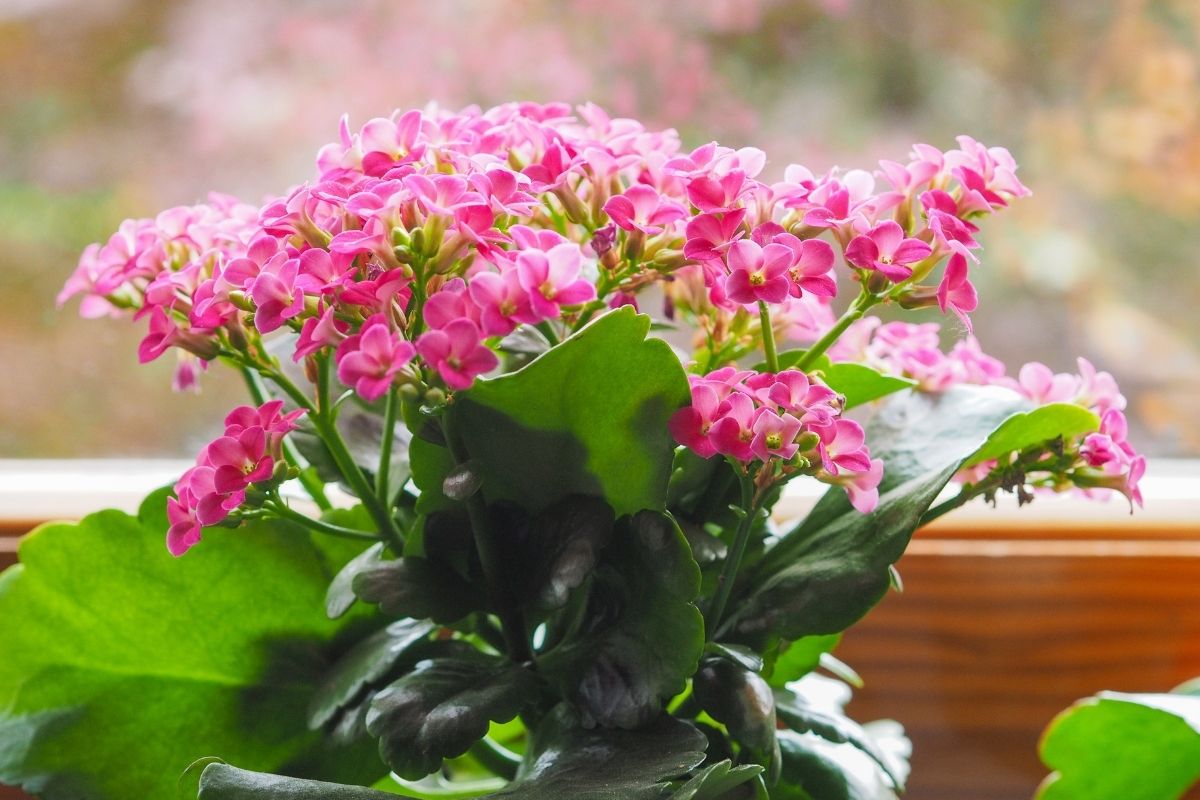
Kalanchoe is a genus of about 150 succulent perennials, many of which are grown as popular undemanding flowering houseplants for sunny windows. In addition, there are many compact hybrids with small, leathery, serrated, ovate leaves which will take on a reddish tone in the bright sun.
In the spring on the plant appear clusters of tiny flowers on short stalks, which can last for several weeks. Initially, the flowers were red or orange, but there are numerous white, rose, or pink cultivars today.
Hybrid kalanchoe is usually a low plant that grows between five to ten inches tall.
If it does not get enough direct sunlight light, the stem lengthens, the leaves thin out, and flowering is absent.
That is why a south-facing window is an ideal place for this plant that will delight you with rich flowering when few other plants are blooming.
4. African Milk Bush (Euphorbia Trigona)
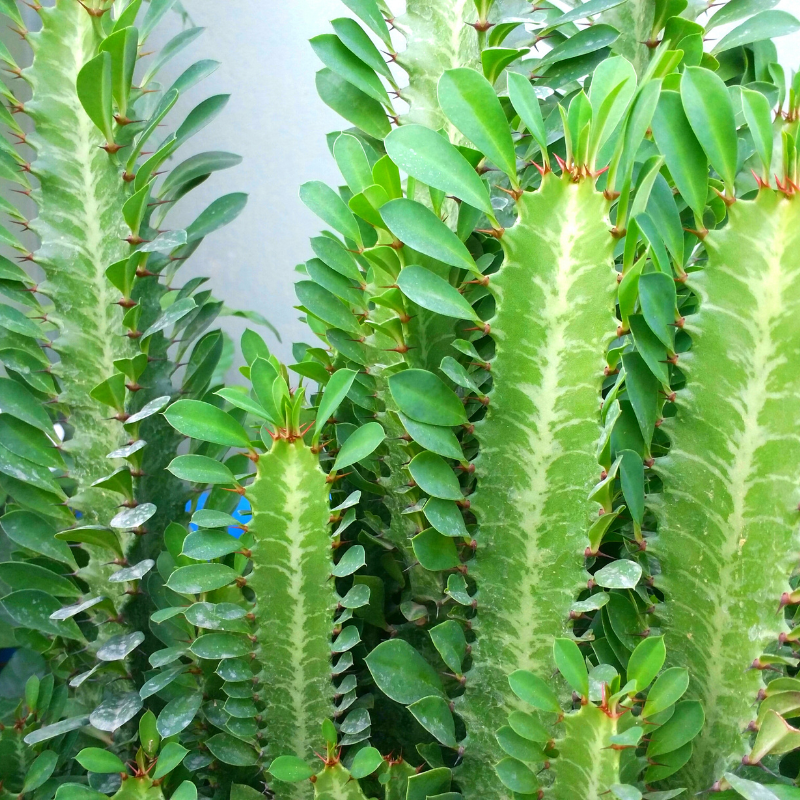
Another plant that will not mind hours of exposure to direct sunlight is the African milk bush, euphorbia trigona, or African milk tree, an unusual succulent of upright growth.
Its thickened stems of triangular cross-section have serrated edges on which one-inch long teardrop-shaped leaves grow almost horizontally.
Like other plants in the Euphorbiaceae family, the plant secretes a latex sap that irritates the skin and mucous membranes when incised.
The easy-to-grow plant creates a vertical magnetic structure as new stems develop, adhering to the central branch forming an actual green wall.
Euphorbia trigona rubra is especially attractive because of its unusual, dark red to burgundy branches and leaves, which are more pronounced as the plants get full sun.
5. Jerusalem Cherry (Solanum Pseudocapsicum)
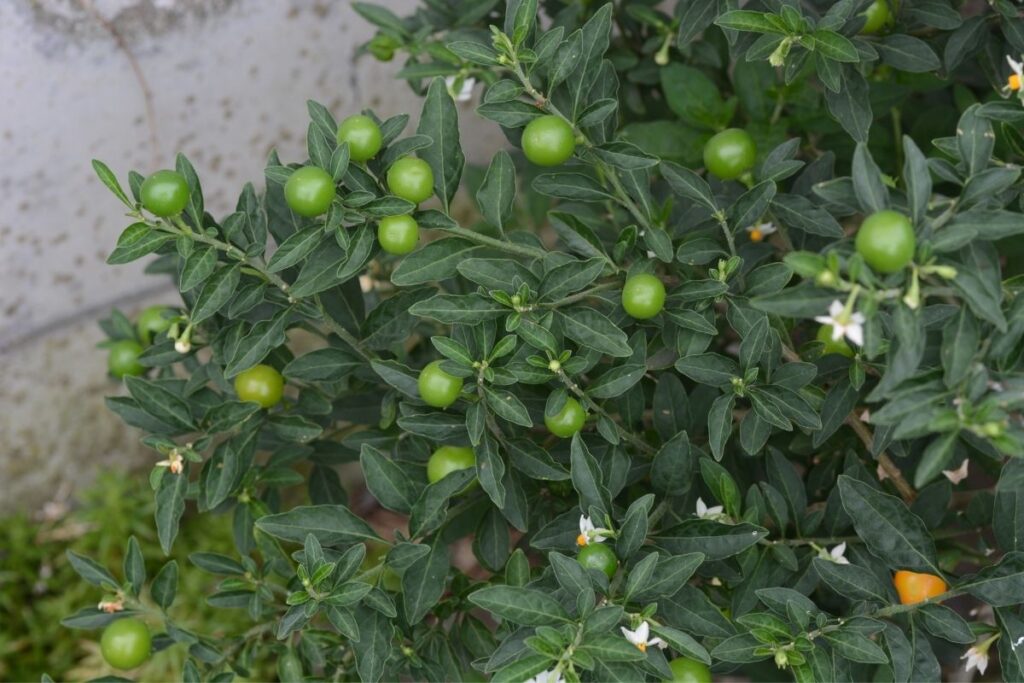
The Jerusalem cherry is another good choice for the south-facing window as this small plant from the Solanaceae family adores bright light and heat.
It can usually grow about 20 inches in height, but some specimens can be up to six feet high.
Jerusalem cherry has an upright stem on which alternately small dark green leaves with wavy edges grow.
Jerusalem cherry flower is similar to the potato flower. They form in the axils of the leaves and grow on flower stalks about one inch long.
In autumn, the flowers bear fruit. The fruits of this ornamental plant are orange or red berries. They can be around one-half of an inch in size, look like miniature tomatoes and stay on the plant long.
Unlike the above succulent plants, Jerusalem cherry loves moisture, so do not allow it to stay without water for too long and the substrate to dry completely, especially in the summer months before it starts to bloom.
After flowering, when the fruits appear, reduce watering but spray the leaves regularly to prolong their life.
6. Blue Torch Cactus (Pilosocereus Azureus)

Of course, cacti occupy a special place on the list of plants that cope well with the blazing sun on the south/facing windows. We have singled out the blue torch cactus among 150 genera and more than 2,500 species because of its unreal azure color. Still, generally, the south-facing window is an ideal place for almost any species of cactus, the great lovers of direct light.
Blue torch cactus is one of 50 species from the Pilosocereus family. It grows in an upright candlestick-like shape. The central trunk, actually a thickened stem, is divided into skewers on the edges of which grow yellow or orange thorns between the hairy tufts.
It is a long-lived plant, and its unreal blue color becomes more intense with age. If you provide it with enough direct light and a high temperature, it will bloom with spectacular white flowers that open during the night when it reaches maturity.
The humble cactus is extremely easy to grow, and even children can take care of it if you draw their attention to the thorns that can hurt.
With plenty of bright light and little water, it needs a well-drained substrate, such as ready-made cactus mix or blends of soil and sand or gravel.
RELATED: Ten Extraordinary Types of Tall Cactus Can Revive Your Yards and Landscapes
7. Spices: Lavender, Rosemary, Basil

If you want to add a fragrant note to the space, you can use your south-facing window to grow herbs from the Mediterranean, such as rosemary, lavender, or basil.
The pleasure of growing your spices that will be at your fingertips is not reserved only for those who have a garden or backyard and live in the frost-free climate zones.
If you live in the northern hemisphere with a continental climate, a sunny south-facing window with plenty of bright lighting is the perfect place to grow these plants in pots!
Gray-green lavender leaves, needle-like, dark green rosemary leaves, and delicate bright green leaves of basil will enliven the sill in your small window garden.
If you opt for this venture, try to find dwarf species suitable for growing in pots that do not have a deep root or the shape of a large bush. For example, blue boy rosemary, Sancho Pansa lavender, and purple basil create a colorful trio of sizable plants.
8. The String of Pearls – Curio Rowleyanus (Formerly Senecio Rowleyanus)

The string of pearls is another lover of full sun, heat, and dry air that copes well with the conditions on sunny south-facing windows. This adorable succulent is native to East Africa, growing as a creeping ground cover. It has unusual pea-like leaves on long vining stems, so it looks great in a hanging basket or stands.
Although it is perennial, this plant usually does not last longer than a few seasons, but it propagates easily, so any stem you shorten or cut can grow into a new plant.
To thrive, the plant needs at least six to eight hours of direct sunlight each day, making it an ideal candidate for positions next to the south-facing windows.
The string of pearls is a plant that blooms in spring with tiny white flowers with a pleasant cinnamon-like scent. However, flowering is rare in plants grown indoors because such plants spend the whole year at more or less the same temperature.
If you want to encourage blooming, place your string of pearls in a bright but unheated room with a temperature of 40 to 45 F during the winter. It provides a dormant phase similar to that which specimens go through in nature necessary for flowering.
Best Plants for Bright Indirect Light
1. Sago Palm (Cycas Revoluta)
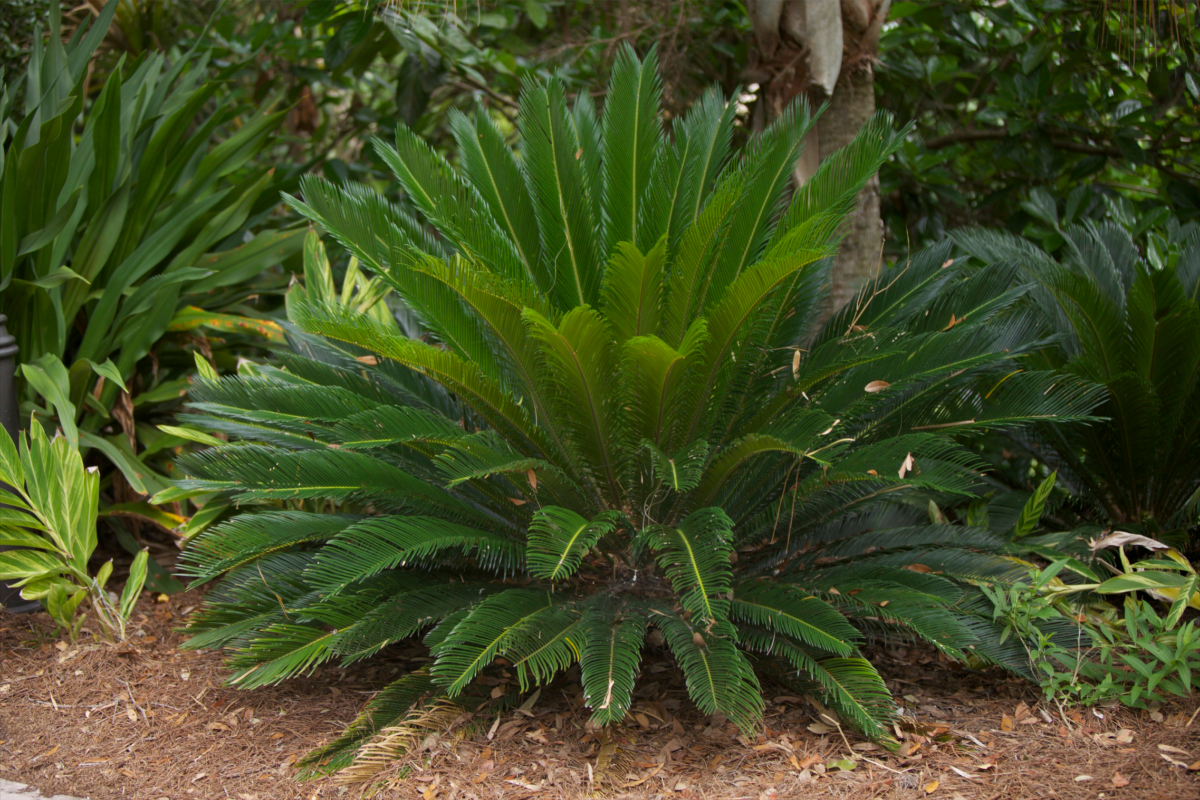
Sago palm originates from the warmer parts of Japan and southern China and, despite its name, is not a natural palm but a plant from the Cycadaceae family.
However, that does not diminish its tropical exoticism, which is why it has become one of the most sought-after houseplants.
In nature, these plants can grow to an impressive 20 feet, but it takes many decades to reach full height as they grow very slowly. When grown as a houseplant, sago palm grows even slower! Its lacy fronds grow to a height of two feet only after five or six years!
In other words, arm yourself with patience because you cannot expect more than one frond in one year.
Although this slow growth may seem like a disadvantage to you, it still has its advantages: sago palm remains sizable and manageable for years, bringing a distant tropical atmosphere into your home.
If you place it next to south-facing windows, where it will enjoy a lot of bright indirect light, you will get long-lasting tropic decoration without much effort.
2. Croton Plants (Codiaeum Variegatum)
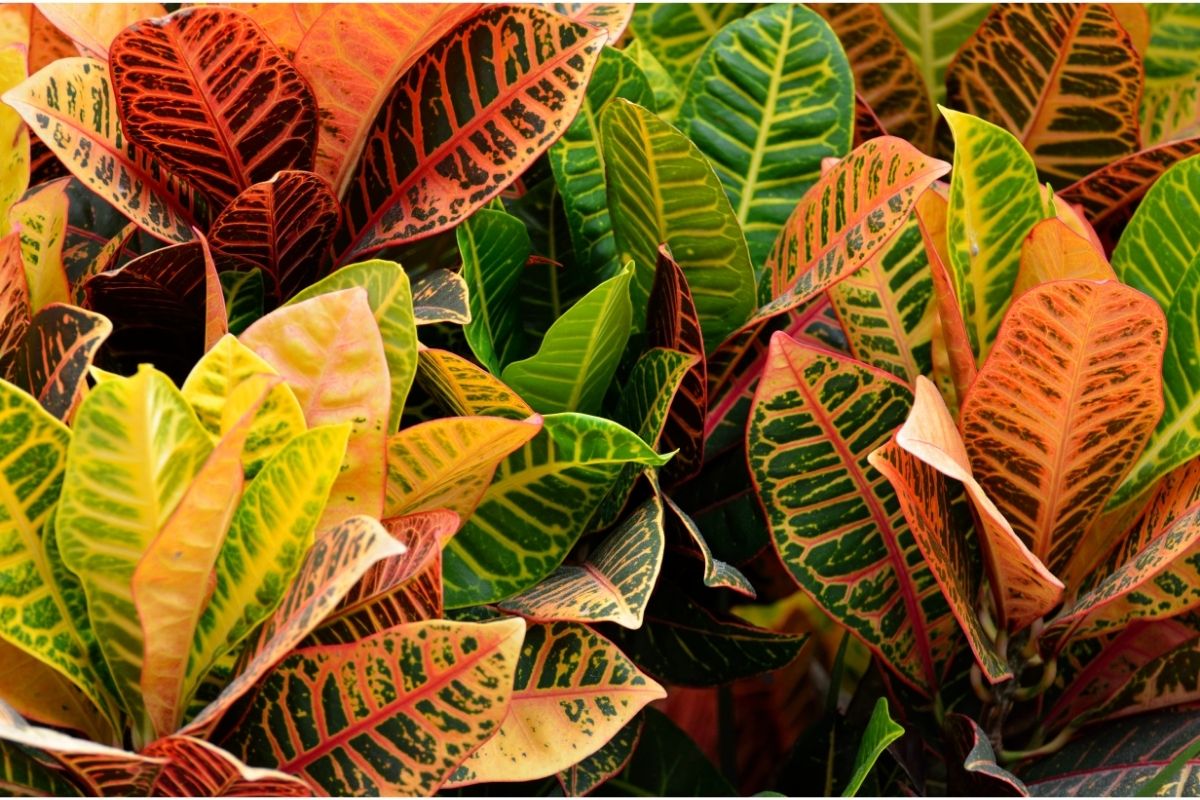
One of the most colorful plants you can grow at home is the irresistible croton, a plant from the Euphorbiaceae family. This upright shrubby beauty can grow up to ten feet tall and four feet wide, but they are usually much smaller indoors.
Croton has magnificent, large, shiny, thickened, and leathery leaves with an entire edge and irregular shape painted with a range of shades from dark green, gold, and copper.
The coloration of the leaves is much more pronounced when it grows in the bright indirect light, so place it a few feet from the south-facing window where it will show all the splendor of color, without the danger of too much sun burning its leaves.
Sensitive to drafts and low temperatures, croton can be pretty tricky to grow. It requires high humidity, so spray its leaves regularly, especially in summer. Water it abundantly from spring to autumn, sparingly in winter. And do not move it often because it can start discarding leaves!
3. Snake Plant (Sansevieria)
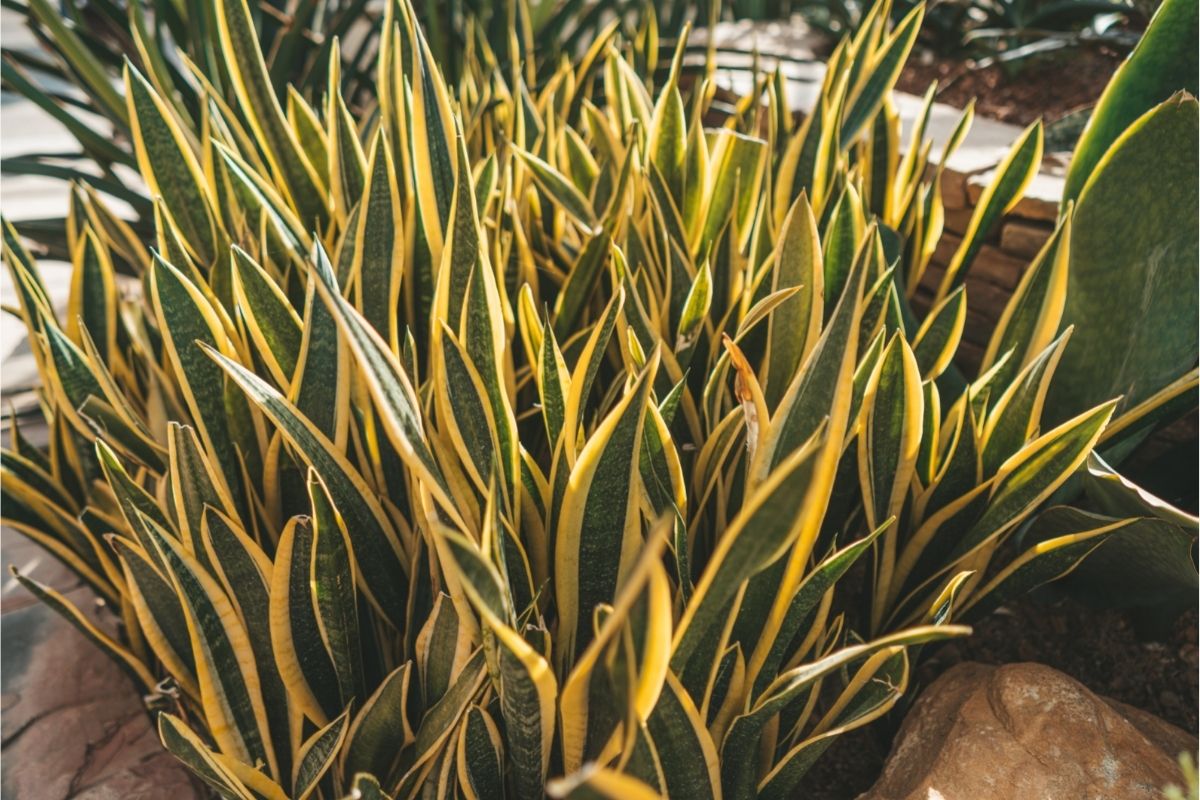
Durable and of modest requirements, snake plant or sansevieria is, with good reason, one of the most popular indoor plants. In addition, it has a reputation for being a plant that is difficult to destroy, so it is a favorite of both beginners and plant enthusiasts.
Snake plant tolerates exposure to direct sunlight well but grows better if it gets a lot of bright indirect light.
Therefore, you can place it next to the south-facing window without fear that the intense sun will damage its stiff fleshy sword-like foliage that grows directly from the roots forming an upright leaf rosette.
The leaves of the snake plant are dark green with discrete lighter transverse patterns resembling an ECG line, and in some species, with a cream or yellow border.
The only thing you have to take care of when growing sansevieria is not to overwater it. Its shallow root cannot handle soaked substrate, so it is best to water it only when the substrate in the pot dries well. And, of course, like other plants from tropical Africa, it is not resistant to low temperatures and dies if the temperature drops below 50 F.
RELATED: How To Propagate A Snake Plant: What You Need To Know
4. Ponytail Palm (Beaucarnea Recurvata)
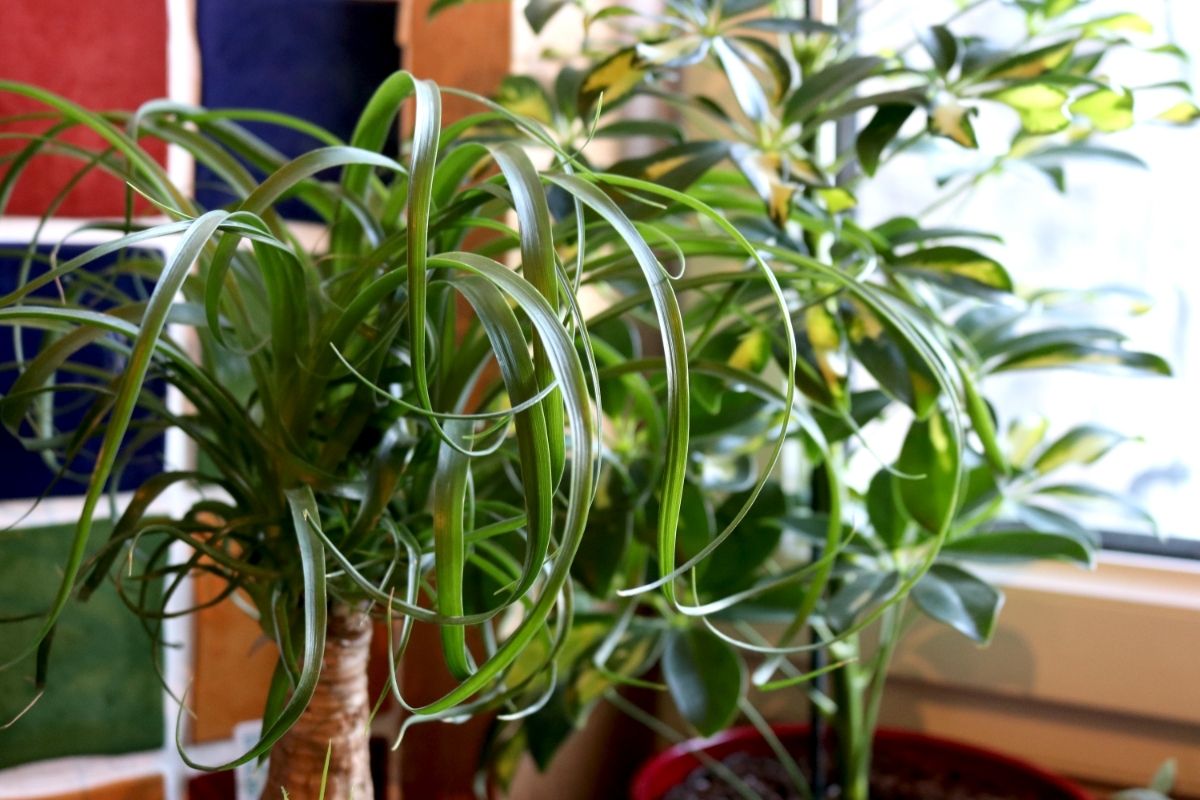
Ponytail palm, elephant’s foot, is an extravagantly decorative plant native to Mexico, where it is naturally adapted to full sun conditions.
Ponytail palm has a characteristic stem that resembles an elephant’s foot, hence the name. Long and narrow leaves grow at the top of the stem, gathered in a tuft.
Although it is known as ponytail palm, this is not a palm – it is a succulent plant that in its natural environment grows 15 feet tall with a central stem (caudex) five feet in diameter resembling a tree trunk. Indoor ponytail plants are much smaller and do not grow more than four feet for many years.
Like other succulents, ponytail palm can tolerate long periods without watering, but it will grow faster and better if you water it every 15 days in summer and once a month in winter. Provide your ponytail palm with a well-permeable substrate like a ready-made succulent mixture, or add sandy soil to give the mixture lightness and permeability!
5. Hibiscus (Hibiscus Rosa-Sinensis)
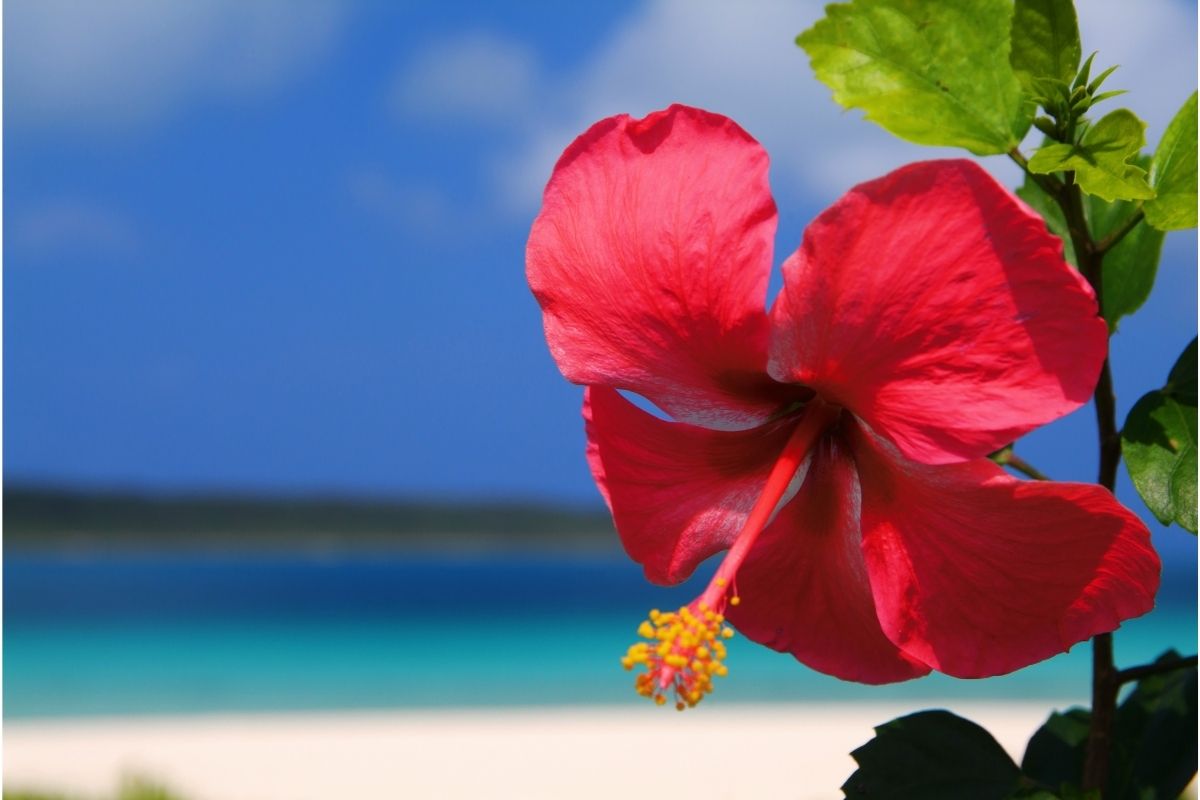
The exotic tropical hibiscus has dark green foliage and beautiful double or single flowers three to four inches wide, with anthers on a central column of anther threads. The colors of the flowers can be different: red, pink, orange, white, or yellow, with many hybrids with multicolored flowers.
Each flower lasts only one or two days, but the plant gives new flowers daily as a heavy bloomer. Under suitable conditions, this tropical plant can grow into a six-foot shrub, but indoors, half-smaller, compact plants are much more common.
Hibiscus is not demanding to grow as long as you provide it with moderately moist soil and plenty of bright indirect light. Do not allow the substrate to dry out since hibiscus loves moist soil. Water it freely and often in summer as soon as the soil surface dries to a depth of two inches, sparingly in winter when dormant. Please do not move it when it forms flower buds since they may fall off!
6. Jasmine (Jasminum Officinale)
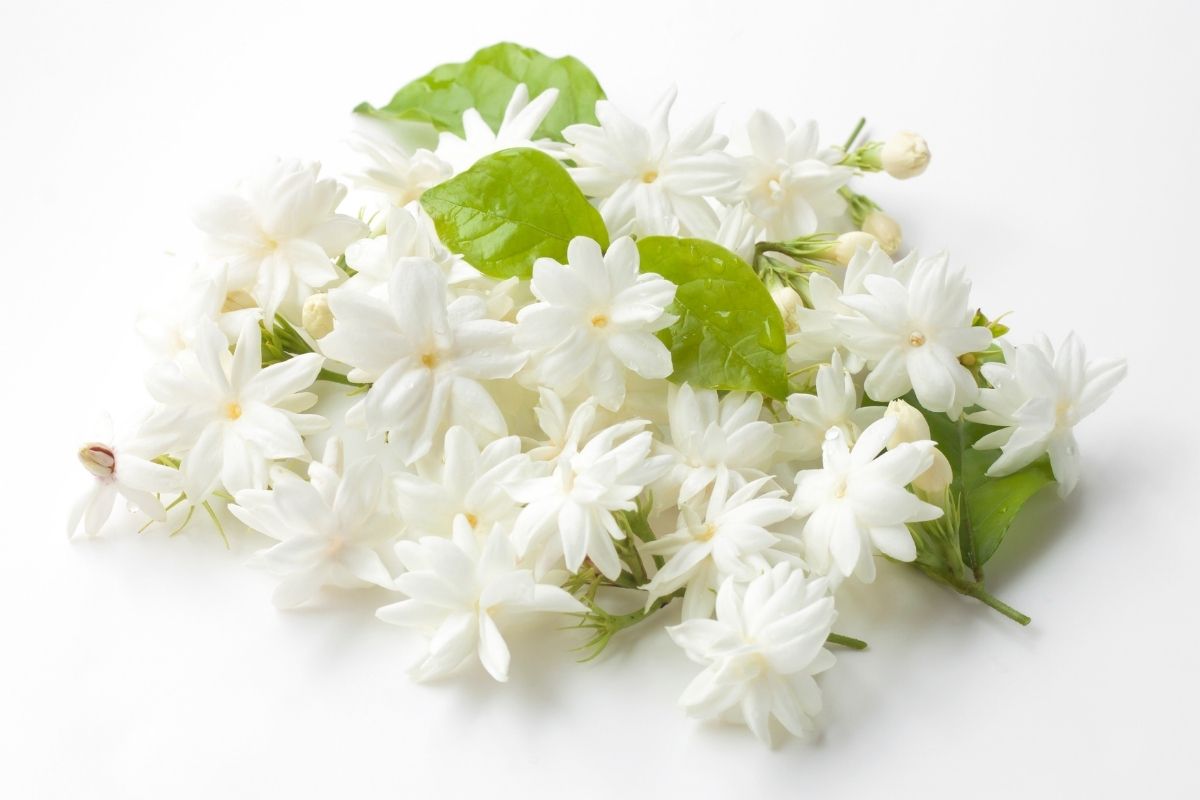
Jasminum Officinale is a deciduous climber with split dark green leaves with five to nine leaflets and flabby twigs of fragrant white star-shaped flowers about an inch in diameter.
It grows best in large pots with support around which it can twist. Jasminum proliferates, so you can prune it after flowering to the desired size. If you let your plant grow freely in a few years, it will reach 10 feet in height!
Jasmine loves the full sun and moisture, so water it abundantly, especially in summer, not allowing the substrate in the pot to be dry. On the other hand, avoid soggy soil because it is also dangerous! Always check the substrate with your fingers and water only when it dries to a depth of one or two inches.
If you want to enjoy its fragrant flowers, place it next to the sunny window so that it gets some direct light because, without full sun, jasmine will not bloom.
RELATED: The Jazziest Flower: 11 Different Types Of Jasmine Flowers
Frequently Asked Questions
Is a south-facing window good for plants?
The south-facing windows imply an abundance of direct sunlight in all seasons, even winter. The sun passing through the window glass raises the temperature, often causing a magnifying glass effect. Therefore many plants cannot survive on the south window.
Do succulents like south-facing windows?
Succulents are plants that cope well with the conditions on the south window because they come from areas with dry soil and plenty of suns and thrive best on the south window.
Which direction window is best for plants?
It depends on the type of plant. Different plant species have different light requirements, from those that love the direct sun like cacti and succulents to those that feel better in partially shaded places. Therefore choose plants that you can provide the right conditions!
Learn more about different plants, check out
Top 9 Hanging Plans For Low Light – The Winning Combination For Tropical Vibe
Types of Naked Ladies Flowers – Three Species Under the Same Name
What Type of Pothos Do I Have? Let Us Solve the Puzzle!







